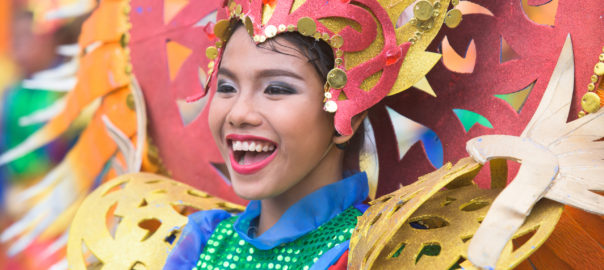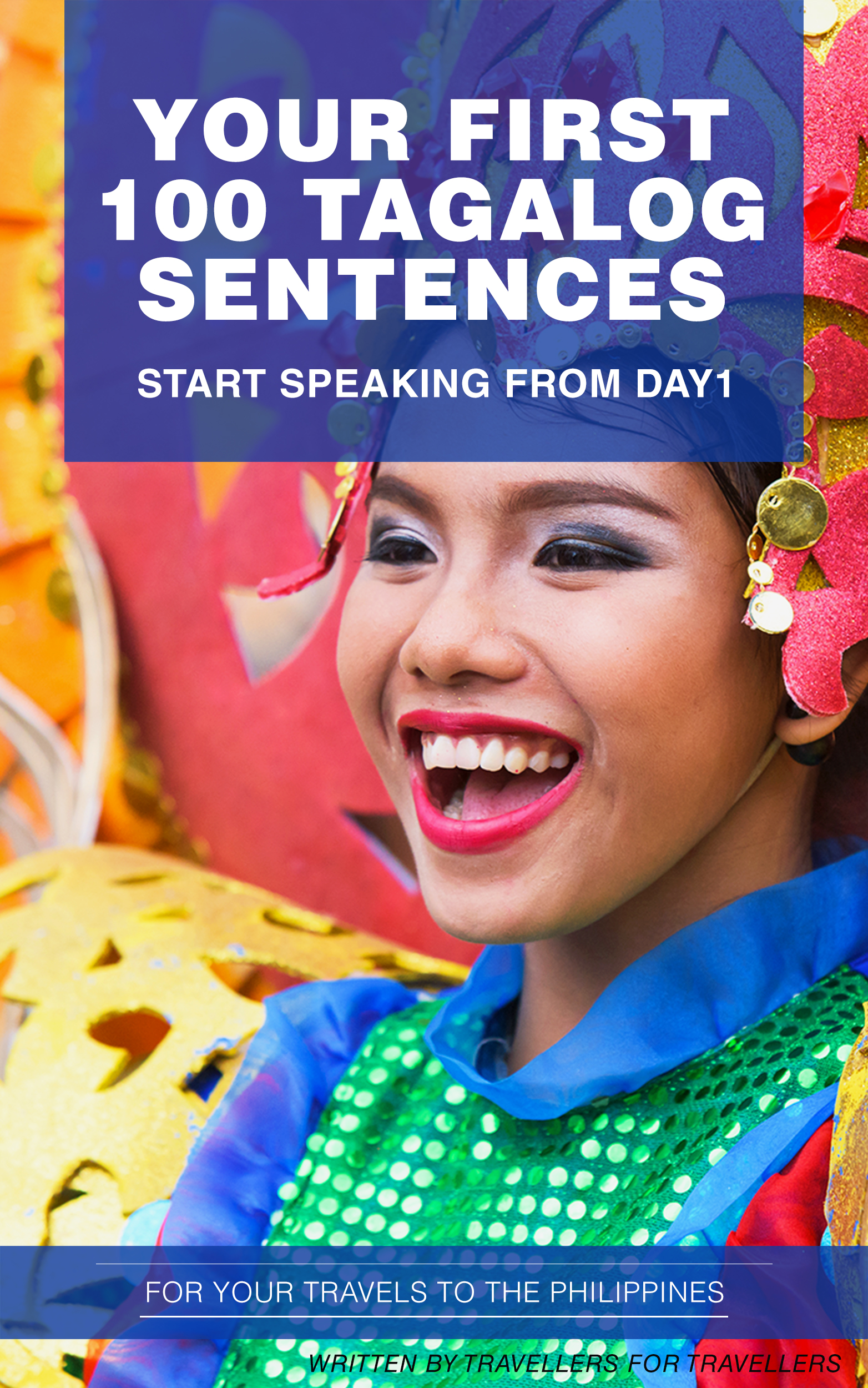Adjectives, or Pang-uri in Tagalog, are words that modify the nouns or pronouns by giving some information about them.
Examples of this information could be somethings color, how many of them there are or how it looks like.
You probably already know what adjectives are.
If you say in English, “The apple is red.” the word “red” here is the adjective since this word describes the apple.
In Tagalog, that would be “Pula ang mansanas.” The word “pula” means “red” describes the apple, and is therefore the adjective.
You could also say “Maganda ka.“
In this examples, “Maganda” means “beautiful.” That is the adjective, because it describes “Ka” which means “you.”
This sentence says “You are beautiful.” (Adjectives are pretty useful, huh?)
Tagalog adjectives are just one of nine parts of speech. Here in Talk Tagalog we’ve tackled several parts of the Tagalog speech already.
Example of other parts of Tagalog speech would include nouns (check out: All You Have to Know About Tagalog Nouns), pronouns (read: The Beginner’s Guide to Tagalog Pronouns), or verbs (one of our most popular articles: Tagalog Prefixes, Infixes, Suffixes: Why Tagalog Verbs Drive Language Learners Crazy). You get the drift.
But hey, we’re here to talk about Tagalog adjectives or Pang-uri.
So let’s get a bird’s eye view of Pang-uri and a great place to start is discussing it’s five main types. Without further ado…
1) Descriptive Adjectives – Mga Pang-uri na Panglarawan
Descriptive adjectives are the most common type of adjective. These are the simple words we see in a sentence that help to describe nouns – colors, sizes, or other descriptive words.
| COLOR (KULAY) | SIZE (LAKI) | SHAPE (HUGIS) | TASTE (LASA) |
| red – pula | small – maliit | triangle – tatsulok | sweet – matamis |
| yellow – dilaw | big – malaki | square – parisukat | sour – maasim |
| blue – asul | short – maigsi | circle – bilog | spicy – maanghang |
| black – itim | long – mahaba | heart – puso | bitter – mapait |
| green – berde | little – kaunti | rectangle – rektanggulo | tasty – malasa |
| pink – rosas | medium – katamtaman | oblong – pahaba | bland – walang lasa |
| brown – kayumanggi | large – napakaluwang | star – tala | spoiled – panis |
|
NUMBER (NUMERO) |
APPEARANCE – HITSURA |
POSITIVE PERSONALITY – POSITIBONG PERSONALIDAD | NEGATIVE PERSONALITY – NEGATIBONG PERSONALIDAD |
| One – isa | Beautiful – maganda | Courageous – matapang | Coward – duwag |
| Two – dalawa | Handsome – guwapo | Smart – matalino | Dull – mapurol |
| Three – tatlo | Bald – kalbo | Kind – mabait | Mean – masahol |
| Four – apat | Hairy – mayabong | Polite – magalang | Rude – magaspang |
| Five – lima | Slim – payat | Diligent – masipag | Lazy – tamad |
| Six – anim | Light – magaan | Happy – masayahin | Sad – malungkutin |
| Seven – pito | Heavy – mabigat | Obedient – masunurin | Stubborn – matigas |
| Eight – walo | Healthy – malusog | Faithful – tapat | Unfaithful – manlilinlang |
| Nine – siyam | Weak – matamlay | Calm – kalmado | Jealous – selosa |
| Ten – Sampu | Clean – malinis | Gentle – marahan | Violent – marahas |
2) Possessive Adjectives – Mga Pang-uri na Panghalip
Possessive adjectives demonstrate a relationship of ownership.
Like possessive pronouns, they just act as adjectives. Possessive adjectives work when we describe an action that serves as the subject of a sentence.
In below table, those in red are the possessive adjectives and in blue (just as additional words to learn today) are the nouns.
| POSSESSIVE ADJECTIVES | MGA PANG-URI NA PANGHALIP |
| It is my handkerchief. | Panyo ko iyan. |
| We are going to her class. | Pupunta tayo sa kaniyang klase. |
| I am singing his piece. | Kinakanta ko ang kaniyang piyesa. |
| Can I play with your cat? | Pwede ko bang laruin ang iyong pusa? |
| We love our new house. | Mahal namin ang aming bagong bahay. |
| Our selling the car was the result of bankcruptcy. | Ang pagbibili namin ng aming sasakyan ay resulta ng pagkabagsak ng aming negosyo. |
3. Demonstrative Adjectives – Mga Pang-uri na Pamatlig
Demonstrative Adjectives are also identical to demonstrative pronouns because they identify the purpose of the kind of words that are used in a sentence.
In below table, those in red are the possessive adjectives and in blue (just as additional words to learn today) are the nouns.
| DEMONSTRATIVE ADJECTIVES | MGA PANG-URI NA PAMATLIG |
| Take this apple and eat it. | Kuhanin mo itong mansanas at kainin. |
| I love that new umbrella. | Gusto ko ‘yang bagong payong. |
| Who are those girls? | Sino ‘yong mga batang babae? |
4. Interrogative Adjectives – Mga Pang-uri na Patanong
Interrogative adjectives are simply the adjectives that answer the questions such as which and what of nouns.
In below table, those in red are the possessive adjectives and in blue (just as additional words to learn today) are the nouns.
| INTERROGATIVE ADJECTIVES | MGA PANG-URI NA PATANONG |
| Which restaurant do you want to go to? | Aling kainan ang gusto mong puntahan? |
| What school do you trust your kids with? | Anong paaralan ang pagkakatiwalaan mo ng iyong mga anak? |
5. Indefinite Adjectives – Mga Pang-uri na Di Tiyak
These adjectives are simply those which are vague or which cannot definitely describe the noun because it is not exact as to how many or who.
| INDEFINITE ADJECTIVES | MGA PANG-URI NA DI TIYAK |
| Many people wanted to get married. | Maraming tao ang gustong mag-asawa, |
| Some people wanted to remain single. | Iilang tao ang gustong manatiling hindi kasal. |
| A few people wanted to be a priest. | Kaunting tao ang gustong maging pari. |
Ain’t that easy? You probably already knew what Tagalog adjectives were all along.
If you liked this article maybe you would like to browse through our other articles on grammar.
You didn’t like it? Too bad. Maybe you should go buy a Tagalog-themed shirt to make yourself feel better.

